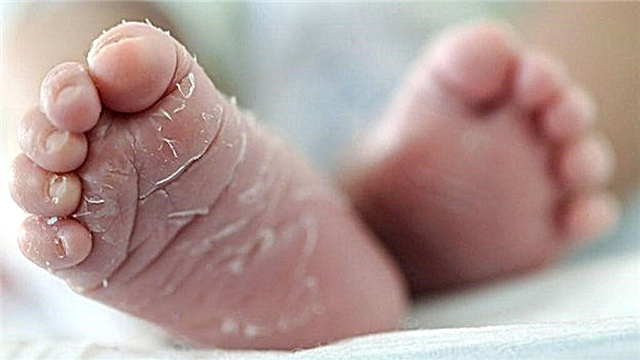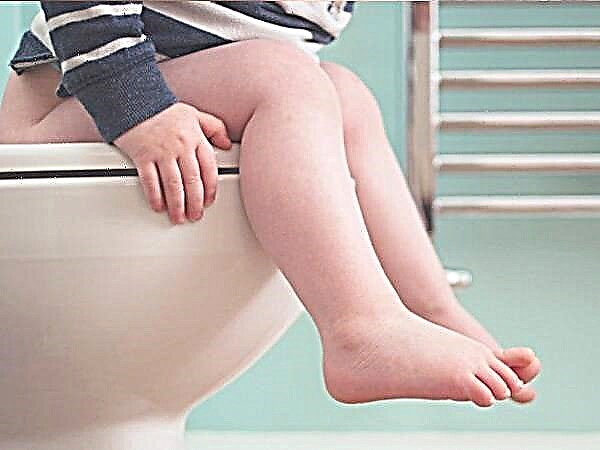
A runny nose is a symptom of a great variety of diseases. In children, most often, the appearance of a runny nose is a sign of a viral infection. There are other reasons for the appearance of snot, and they are also not uncommon in childhood. However, viruses are the unsurpassed leaders in causing the common cold of all intensities. Usually, it is perfectly treated at home by instilling saline solution. But not everyone knows what this solution is, how to prepare it and how to use it correctly. Dr. Komarovsky talks about a recipe for a saline solution for rinsing a child's nose.

The need for application
When viral particles enter the nasal cavity, local immunity is activated. Mucus, which is usually a little in the nose, begins to be secreted at a more intense rate. This is noticeable with the naked eye - the child has a runny nose. The released at the same time has no color, it is transparent, the consistency is very liquid.
The abundant nasal mucus has an important purpose - it binds viruses, slowing their further advance. In addition, the nasal mucus contains a large amount of special substances that can neutralize viruses.
It turns out that there is no need to fight against the very liquid flowing snot in case of ARVI or flu, they are necessary for the body to protect itself. But this mucus can be dangerous to the baby if it begins to thicken. This can happen if the child breathes dry warm air, if he drinks little liquid, if the room is dusty. If the body temperature is elevated, the mucus dries up even faster.

Thickened snot that not only change its consistency, but also color (for example, turn green) is an excellent breeding ground for bacteria. They no longer protect against viruses, but only contribute to the emergence of bacterial (secondary) inflammation. Such a runny nose is difficult to treat and will require antibiotics.
In the drying of nasal mucus, there is little useful for other respiratory organs - bronchi, trachea, lungs. Viruses freely penetrate into these parts of the respiratory system, infect them, and inhalation of unmoistened air through the mouth (the nose is clogged with thick mucus) leads to drying out of bronchial secretions, which is fraught not only with bronchitis of varying severity and duration, but also pneumonia.

Yevgeny Komarovsky says that the task of any sane parents at the very initial stage is to prevent the excess mucus in the nose from drying out. The saline solution, which is often called saline solution, is intended to help in this.
Whatever you call it, the benefits of rinsing your nose are great:
- mucus in the nose is constantly moisturizedthat does not allow her to dry out;
- recovery is faster;
- the risk of developing secondary inflammationthe associated bacterial disease is significantly reduced;
- parents have something to dowhich gives them the opportunity to feel that they are not sitting idle, but are really treating the child;
- saline has no side effects, it is impossible to get an overdose, and therefore this method is suitable even for a newborn.


Operating principle
Everyone knows the formula of common salt from school - NaCl. And few people know that in fact, salt contains not only sodium and chlorine, but also other useful minerals - magnesium, potassium, calcium, zinc and a number of other elements. When rinsing with a saline solution, sodium and chlorine ions enter the body, which are extremely important for the normal functioning of cells, for the distribution of fluid in the tissues. These ions are essential components of the extracellular fluid.
Saline solution for rinsing a child's nose is very close in concentration to the concentration of salt in blood serum, and therefore it is not regarded by the body as something alien. Additional minerals stimulate the cells of the ciliated epithelium to a more active immune response.

Recipe
You can make a saline solution for rinsing your nose and gargling your throat yourself (at home), or you can buy it at the pharmacy. Yevgeny Komarovsky argues that the purchase of saline is just a matter of convenience for parents. If it is convenient for them to buy a ready-made solution, no problem, it is inexpensive. If there is an opportunity and desire to prepare a rinse aid on your own, problems should also arise.
You can buy pharmacy drops at least once, because then a bottle will remain from them, which is very convenient for irrigating the mucous membranes of the nose and nasopharynx. You can then pour home solution into it and use it. From pharmacy products you can purchase "Aquamaris" or "Salin".


At home, isotonic sodium chloride solution (namely, this is the official scientific name of saline) is very simple to prepare. You will need:
- ordinary table salt (1 teaspoon);
- boiled water cooled to room temperature (1 liter).
A solution is prepared from these ingredients by mixing, the concentration of salt in which is approximately 9 g per liter. In the finished product "Salin", the salt concentration is lower - about 6.5 g per liter. In a pharmacy saline solution, the salt concentration is at the level of a home solution. More concentrated salt solutions are prepared for external use for some skin diseases, and weaker solutions are relevant for washing the stomach and eyes.

Mode of application
Rinsing the nose with saline to achieve a therapeutic effect must be correct. With influenza and ARVI, Evgeny Komarovsky recommends irrigating the nasal mucosa as often as possible - one or two drops of ready-made pharmaceutical solution in each nostril (every half hour). If the child has fallen asleep, then it is not worth waking him up for instillation or spraying, the procedures that will be carried out during periods of wakefulness are quite enough.
If you decide to rinse your nose with saline prepared yourself, you can also use a dispenser bottle (at the above dosage). If a pipette is used for rinsing, then you need to collect a whole in each nostril. If the procedure is more convenient to carry out using a disposable syringe, then you need to collect about one and a half milliliters to rinse each nostril. The frequency of flushing is at the specified dose every 30-40 minutes.
There is another way to wash the nose, which is popularly called "cuckoo". It is often recommended as a physiotherapy for sinusitis and some other diseases of the respiratory organs. The procedure got its name due to the fact that when rinsing one should often say "cuckoo". This allows the larynx to close tightly, preventing the penetration of saline and pathological contents of the nasal sinuses.

If the treatment of sinusitis takes place in a hospital, washing will be carried out in a certain way - not without the participation of a medical specialist. If the stage of the disease is initial, the doctor allowed to be treated at home and recommended doing a "cuckoo", then it is worth remembering the procedure.
For washing, you will need a special teapot, which can be bought at any pharmacy. In the absence of such a product, Komarovsky recommends using a disposable syringe.
The child's head should be positioned above the sink in the bathroom - in a position slightly forward and tilted to the side (about 45 degrees). The solution is injected into the nostril gently, with a gradual increase in the stream. If everything is done correctly, then a solution with fragments of nasal mucus, pus or other impurities will begin to flow from the second nostril. Then the second nostril is washed in the same way.

It is not at all necessary to strictly adhere to the dosage when using saline, since it is basically impossible to overdose. Evgeny Komarovsky claims that there is no safer and more effective treatment for a cold.

Vasoconstrictor drops cause persistent drug addiction, drugs with antibiotics are needed and effective only for bacterial rhinitis, and even then not for everyone. And the saline solution, which can be prepared at no extra cost and at any time, does not cause any negative consequences. At the same time, with its help, it is possible not only to moisten the mucous membranes in order to prevent the mucus from drying out, but also to remove accumulated clots, dead cells, and virus particles from the nasal cavity.

Doctor Komarovsky's advice
The efficiency of nasal and nasopharyngeal irrigation with saline will be significantly higher, and recovery will come much faster if parents (in addition to instillation and rinsing) observe several important concomitant conditions:
- The room should be humid and cool. The air temperature is not higher than 18-20 degrees, and the air humidity is 50-70%.
- If the child's fever has decreased, you must definitely walk in the fresh air.
- During illness, the child should drink as much as possible. The drink should be warm so that it is absorbed faster.

How to properly prepare a saline solution, Dr. Komarovsky tells in his video below.



